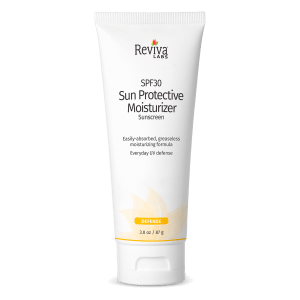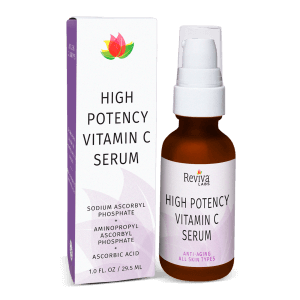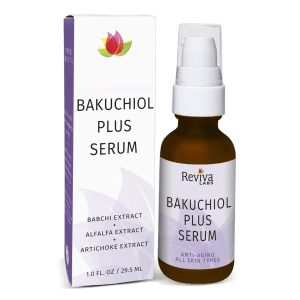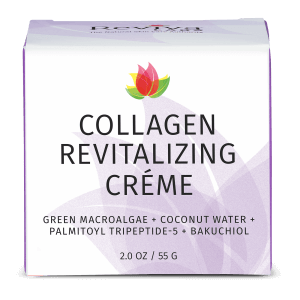Ingredients, Reviva Labs, Skin Care
How Does Sunscreen Work and What Did People Do Before Its Discovery
The Science Behind Sunscreen
Sunscreen is a remarkable skincare product that serves as a protective barrier between our skin and the sun’s harmful ultraviolet (UV) rays. Understanding how it works requires a basic knowledge of UV radiation and its effects on the skin. The sun emits two primary types of UV radiation that reach the Earth’s surface: UVA and UVB. UVA rays penetrate deep into the skin and are primarily responsible for premature aging and wrinkles, while UVB rays affect the outer layers of the skin and are the main cause of sunburn. Both types can contribute to skin cancer.
Sunscreens contain active ingredients that help prevent UV radiation from reaching the skin. These ingredients can be classified into two main types: physical blockers and chemical absorbers. Physical blockers, such as zinc oxide and titanium dioxide, sit on the skin’s surface and reflect UV rays away from the skin. Chemical absorbers, on the other hand, penetrate the skin and absorb UV radiation, converting it into harmless heat through a chemical reaction.
The Role of SPF in Sunscreen
Sun Protection Factor (SPF) is a crucial measure of a sunscreen’s effectiveness. SPF indicates how well a sunscreen can protect the skin from UVB rays. For instance, an SPF of 30 means that it would take 30 times longer for UVB rays to cause redness or sunburn compared to unprotected skin. However, no sunscreen can block 100% of UV rays. An SPF 30 sunscreen blocks approximately 97% of UVB rays, while an SPF 50 blocks about 98%.
It’s important to apply sunscreen generously and reapply it every two hours, especially after swimming or sweating. A common mistake is using too little sunscreen, which significantly reduces its effectiveness. According to the Skin Cancer Foundation, most people apply only 25-50% of the recommended amount, which reduces the actual SPF protection they receive.
The Evolution of Sun Protection
Before the invention of modern sunscreen, people employed various methods to protect their skin from the sun. In ancient times, different cultures used natural substances and innovative techniques to shield themselves from UV rays.
One of the earliest known sun protection methods comes from ancient Egypt. Egyptians used a combination of rice bran, jasmine, and lupine as a type of sunblock. These ingredients contain natural oils and antioxidants that offered some degree of protection against the sun.
In ancient Greece, athletes applied olive oil to their skin, which they believed helped to prevent sunburn. Olive oil contains antioxidants and vitamin E, which provided some skin benefits, although its effectiveness as a sunscreen is limited.
In the 16th century, pale skin became a status symbol in Europe, associated with the upper class who did not have to work outdoors. To maintain fair skin, people used various concoctions, including mixtures of lead and vinegar. While these methods often had harmful effects, they highlight the lengths to which people would go to avoid sun damage.
In Polynesia, indigenous people used coconut oil for its moisturizing properties and mild sun protection benefits. Although it wasn’t as effective as modern sunscreens, it provided a natural barrier against the sun and helped to keep the skin hydrated.
The Birth of Modern Sunscreen
The development of modern sunscreen began in the 20th century. In 1938, Swiss chemist Franz Greiter suffered a severe sunburn while climbing Mount Piz Buin. This incident inspired him to create one of the first sunscreens, which he called “Gletscher Crème” (Glacier Cream). Greiter’s formulation provided an SPF of 2, which was a significant breakthrough at the time.
In the 1940s, Benjamin Green, a pharmacist and airman, developed a sunscreen for the US military using a red veterinary petrolatum called “Red Vet Pet.” This greasy substance provided basic sun protection for soldiers during World War II. Green’s formula eventually evolved into the popular Coppertone sunscreen brand.

The introduction of more effective sunscreens came in the 1970s with the development of broad-spectrum formulations. These sunscreens could protect against both UVA and UVB rays, offering more comprehensive skin protection. Since then, advances in sunscreen technology have led to products that are more effective, less greasy, and easier to apply.
Modern Sunscreen Innovations
Today’s sunscreens are more sophisticated than ever, thanks to ongoing research and technological advancements. Many modern sunscreens include additional skin benefits, such as moisturizing ingredients, antioxidants, and anti-aging properties. These multifunctional products not only protect the skin from UV radiation but also help to improve its overall health and appearance.
Nanotechnology has also played a role in enhancing sunscreen effectiveness. Nano-sized particles of zinc oxide and titanium dioxide provide more transparent and cosmetically pleasing formulations while maintaining strong UV protection. This has addressed the common complaint of physical sunscreens leaving a white cast on the skin.
Moreover, the rise of water-resistant and sweat-resistant sunscreens has made it easier for people to stay protected during outdoor activities and exercise. These formulations adhere better to the skin, providing longer-lasting protection even in challenging conditions.
The Importance of Sunscreen in Skincare
Using sunscreen is one of the most important steps in any skincare routine. It helps prevent sunburn, premature aging, and reduces the risk of skin cancer. According to the American Academy of Dermatology, regular daily use of SPF 15 sunscreen can reduce the risk of developing squamous cell carcinoma by about 40%, and lower melanoma risk by 50%.
It’s also crucial to remember that sunscreen should be used year-round, not just during the summer months. UV rays can penetrate clouds and reflect off surfaces like water, snow, and sand, increasing the risk of sun damage even on cloudy or cold days.
Choosing the Right Sunscreen
When selecting a sunscreen, it’s important to consider your skin type and specific needs. For those with sensitive skin, mineral-based sunscreens with zinc oxide or titanium dioxide are often recommended because they are less likely to cause irritation. People with oily or acne-prone skin may prefer oil-free or non-comedogenic formulas that won’t clog pores.
Additionally, sunscreens come in various forms, including lotions, creams, gels, sprays, and sticks. Each has its advantages, and the best choice depends on personal preference and the area of application. For example, stick sunscreens are convenient for the face and areas around the eyes, while sprays are easy to apply on hard-to-reach areas.
Embrace Sunscreen for Healthy Skin
Sunscreen is a vital component of modern skincare, offering essential protection against the harmful effects of UV radiation. By understanding how sunscreen works and appreciating the historical context of sun protection, we can better appreciate its importance. Integrating sunscreen into your daily routine is a simple yet powerful step toward maintaining healthy, youthful skin.
Remember to apply it generously, reapply it regularly, and choose a product that suits your skin type and lifestyle. Embracing sunscreen will help ensure your skin remains protected and vibrant for years to come.










